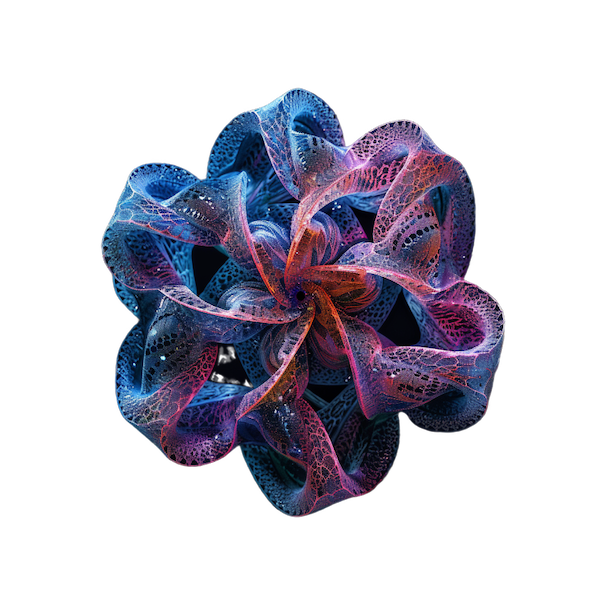
Building a VR worlds to represent Nothing: Plato's concept of the chora and beyond

Background
I am a PhD student in the School of Religious Studies at McGill University. I study nothing. That is, I study the concept of nothing, mainly its development through Plato reception in 19th and 20th century German philosophy of religion. I grew up in Clinton, OK, where Route 66 intersects the Washita River at the edge of the southern plains. BLUE seemed to be an exciting opportunity to try out some of the broader implications of my investigations of nothing - to play conceptually and artistically with technology to represent a philosophical concept without any kind of curmudgeonly or Luddite-esque offhand dismissal. My project is the representation of nothing, stemming from Plato's notion of the chora, in a Virtual Reality experience. I will combine my study of nothing with the literature of VR to best theorize about possible representations of nothing. I will also catalog various VR experiences, laying the groundwork for a phenomenological account. Finally, I will build a VR experience of nothing.

Speaking the Chôra
Chôra – a Greek Word meaning Place
Known by Plato through a kind of Bastard Reasoning [1]
The Chôra - Place - Receptacle - Mother - Womb - and Wetnurse of Becoming
"Being and, place, and becoming, three in a threefold way, are before the birth of heaven. The intelligible—which is clear in itself—that which Remains, matter—but change in what remains, for Plato himself says in other passages that the elements before the creation of the world were in some kind of disorderly movement"[2]
"like a wave-wound, whirling [undulating, surging] sea, akin to Plato’s Chôra, following dark, uncertain law, incapable of constructing for itself anything enduring." [3]
The Chôra- Nothing - Nonbeing - Chaos - Uncanny Negation
"After the eternal act of self-revelation, everything in the world is, as we see it now, rule, order and form; but anarchy still lies in the ground, as if it could break through once again, and nowhere does it appear as if order and form were what is original but rather as if initial anarchy had been brought to order. This is the incomprehensible base of reality in things, the indivisible remainder, that which with the greatest exertion cannot be resolved in understanding but rather remains eternally in the ground." [4]
The Chôra- Abyss - Anarchy - Groundless Ground
Chôra, a Greek Word meaning Place
Representing Nothing: Virtual Reality and Plato’s Chôra
At its simplest, my project attempts to represent a particular philosophical conception of nothing using virtual reality. I began with my doctoral research into the reception history of Plato’s notion of the Chôra through F.W.J. Schelling and eventually Martin Heidegger, Ray L. Hart, and Mark C. Taylor. Each of these thinkers engages with the question of how to think nothing (from the Greek μὴ ὄν) – to re-present a no-thing using a philosophical vocabulary – which becomes a self-defeating endeavor. Nothing is always just out of reach, receding into an abyssal interplay that ruptures its own ground.
On top of this philosophical foundation I added a theoretical framework for virtual reality. [1] What makes VR an intriguing medium to explore abyssal nothingness? It boils down to VR’s main gimmick: an immersive, interactive, and potentially intersubjective networked telepresence. [2] The very name, Virtual Reality, combines a strange oxymoron that blurs distinction between absence and presence. [3] Putting on the bulky VR equipment takes you to another place, bringing with it a sense of embodied presence without actually changing anything about the place you reside, yet you still feel its impact. You can become motion sick in a virtual world in the interplay of the virtual and the real. When coupled with nothingness, VR embodies a Matrix style dilemma. Where does the virtual end and the real begin or end? More broadly this applies to images and code, which we can translate into the classical dilemmas from Platonic or Kantian idealism. The search for an abyssal nothingness is just this kind of search for a ground, balancing the realm of being (order/code/reason) with becoming (image/empirical/virtual) through the medium of negation.
Finally, I created a VR experience using Unity, an open access software, with technical support from David ‘Jhave’ Johnston and Ollivier Dyens. Titled, “Representing Nothing: Virtual Reality and Plato's Chôra,” the project poses a question. How does one represent a non(re)presentable substrate, a nothing? My answer: By demonstrating its uncanny negation that hovers between presence and absence. A groundless ground. A Mise en Abyme. An Infinite Mirror Recursion placed into the abyss at the ruptures of the virtual and the real.
Opening Scene – Above an endless seascape surrounded by dark storm clouds. The camera begins a slow descent. You hear the sound of waves growing louder as you descend. A voice begins to recite the tone poem Speaking the Chôra
Second Scene – You drop through the ocean into a grey space. The ocean above you. Hints of cloud around you. Still descending. The waves turn to droplets. You pass through a sphere. A black box looms beneath you.
Third Scene – You fall into a black box. The droplets turn into the sound of cicadas thrumming. White lines react to your movement, creating odd geometries. As you descend a surface comes into view. 2 mirrors and between them a projection surface, showing a live video feed of you in real life wearing your VR headset. The mirrors capture the image of the real, warping it into a mise en abyme, an infinite recursion.


.svg)




